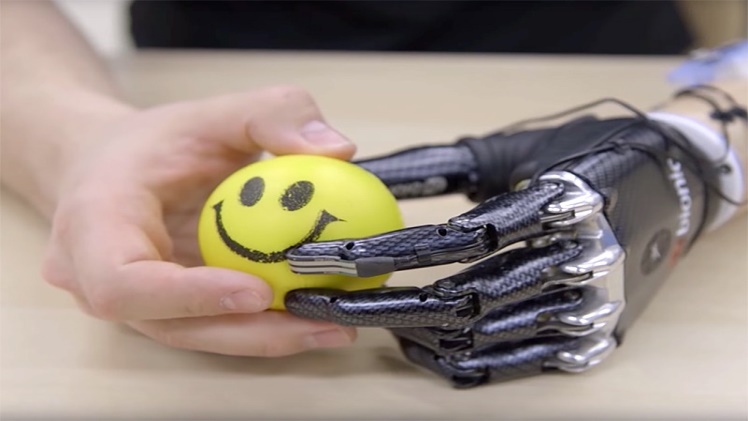Robotic prosthetics have come a long way from the wooden legs of ancient times. Technological advancements are making prosthetics smarter, more dexterous and closer than ever to natural human limbs. Let’s take a look at how robotic prosthetics are revolutionizing the lives of amputees.
Prosthetics have evolved significantly over the decades to restore mobility and functionality to amputees. Earlier prosthetics were basic replacements that offered limited motion. With recent strides in robotics, prosthetic designers are now able to engineer highly advanced bionic limbs that mimic natural movement through sensors, microprocessors and motors. Thanks to cutting edge innovations, amputees today can regain near-natural abilities with these state-of-the-art robotic prosthetics.
Types of Robotic Prosthetics
Robotic Prosthetics Market by CoherentMI discusses different varieties of prosthetics based on the lost limb:
Robotic Arm Prosthetics
The most common type is robotic arm prosthetics which are available as both upper and lower arm replacements. Advanced models contain sensors, microchips and actuators that allow complex gestures like grasping, lifting and rotating of objects. Some even have built-in graspers for pinching tasks.
Robotic Leg Prosthetics
For leg amputees, robotic leg prosthetics powered by microprocessor knees and feet provide enhanced mobility and gait. Models with powered ankle joints mimic natural ankle flex for climbing stairs or walking on uneven surfaces.
Robotic Hand Prosthetics
The most sophisticated are multi-fingered bionic hands with individually moving digits and palm sensors. State-of-the-art designs have pressure sensors in the fingertips and proportional speed control for intricate hand movements and grasping.
How do they Work?
Robotic prosthetics feature the following key technologies working together:
– Sensors: Sensors located in the prosthetic socket or residual limb pickup electrical signals from the user’s remaining nerves and muscles.
– Microprocessor: A microprocessor analyses the sensor signals and commands actuators accordingly. Onboard memory stores pre-set motions for activities.
– Actuators/Motors: Motors power joints like elbow, wrist, knee or ankles to replicate natural ranges of motion based on the microprocessor’s instructions.
– Rechargeable Batteries: Lithium-ion batteries provide portable power for the actuators and on board electronics.
– Control Systems: Myoelectric controls, body-powered cables or neural interfaces allow users to intuitively command prosthetic movements through thought or muscle activity.
Advantages of Robotic Prosthetics
Robotic prosthetics deliver unparalleled functionality, versatility and quality of life advantages over passive prosthetics:
– Near-natural Mobility: Joints powered by microprocessors allow anatomical ranges of motion for walking, running, stairs, kneeling etc.
– Grasping & Dexterity: Sensor-enabled, multi-jointed hands greatly improve fine motor tasks and precision gripping of objects.
– Independency: Robotic limbs boost self-reliance for daily living activities like cooking, dressing, household chores.
– Comfort: Advanced suspension, knee and foot designs provide increased wearing comfort over long durations.
– Career Prospects: Robust bionic limbs empower amputees to pursue active careers and lifestyles.
– Adaptability: Programmable motions let prosthetics cope with varied environments and tasks. Software updates bring new abilities.
Challenges and the Road Ahead
While incredible advancements have been achieved, some challenges still remain for wider adoption of robotic prosthetics:
-
Affordability
The high engineering costs still place these high-tech devices out of reach for many. Insurance coverage is limited and public funding inadequate.
-
Durability & Maintenance
Heavier usage wears out components faster requiring frequent replacements and repairs. Waterproofing needs improvement for all-weather functionality.
-
Connection with Neural Signals
Interfaces facing the challenges of reading, deciphering and accurately relaying complex neural commands over long periods.
-
Battery & Charging Woes
Batteries with greater energy densities and faster charging rates are essential to keep up with amputees’ active lifestyles throughout the day.
With greater R&D investments, these obstacles will continue to reduce. As technology matures, costs will decline through mass production while performance keeps enhancing. The future promises ever lighter, more dexterous and energy-efficient robotic prosthetics achieving near-native abilities.
Market Outlook
The global robotic prosthetic market is witnessing substantial growth driven by factors such as the rising geriatric population, increased incidence of diabetes and road accidents, and technological advancements. North America currently dominates the market owing to advanced healthcare facilities and high acceptance of new technologies. However, emerging regions such as Asia Pacific are expected to offer lucrative opportunities over the coming years. While commercialization barriers persist, continued efforts from engineers, researchers and startups are surely making bionic limbs a viable reality for many more individuals globally. With further enhancements, robotic prosthetics have immense future potential to empower amputees to achieve complete restoration of mobility and self-confidence tattoophreaks

